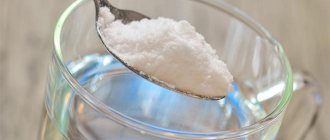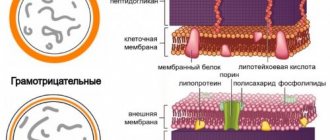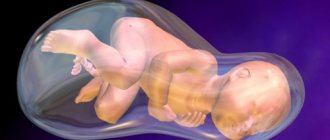For normal, comfortable well-being, an optimal water-salt balance must be maintained in the human body. The mineral composition in our body is, first of all, a source of electrolytes on which many body functions depend, including the ability of the central nervous system to transmit impulses. However, with a lack of fluid in the body, the interaction of electrolytes is disrupted. Therefore, the balance of liquid and salts is considered by experts as inseparable parts of one complex.
What is water-salt balance
Water-salt balance is a certain ratio of fluid and salts (electrolytes) in the body. Its violation leads to various functional changes. Therefore, everyone who cares about their health should know what water-salt balance is, how to recognize its imbalance, and also understand how an imbalance is dangerous to health.
Content:
- What is water-salt balance
- Why does imbalance develop?
- Symptoms of Imbalance
- Diagnosis and treatment of imbalance
- Products for restoring water-salt balance
Water is an irreplaceable, obligatory component of the functioning of any biological system, the components of which, to one degree or another, depend on the chemical and physical properties of both individual water molecules and the supramolecular structures they form. The content of basic biochemical and physiological processes, their quantitative aspect (for example, the release of energy in biological oxidation reactions) require accurate knowledge of the chemical composition of the water molecule and the patterns of its formation.
Water performs the following physiological functions in the body:
- is the structural basis of the optimal physiologically active volume of the cell and the internal environment of the body;
- determines the structural order of biomolecules;
- provides substrate specificity of enzyme action;
- acts as a substrate in a number of enzymatic reactions;
- forms a directed flow of substances inside the cell;
- is a transport medium for the exchange of substances between cells, between the external environment and the internal environment, between the internal environment and cells;
- participates in thermoregulation processes;
- plays the role of a hemodynamic factor in the functioning of the cardiovascular system.
If the water-salt balance is normal, then in the body of an adult there should be about 70% bound and free water, in the bodies of newborns - 90%, and in the bodies of elderly people - approximately 50%. To maintain these indicators, healthy adults should drink 1.5-2 liters of water per day. But these are only general indicators. A more precise need for water by the body is determined by the formula: 1 kg of body weight X per 30-50 ml of water. But even this formula does not allow you to determine the ideal daily portion of water. Indicators may fluctuate depending on air temperature, physical activity and the state of human health. If the body gives off more moisture than it receives, it is said to be dehydrated.
And now, as for the salts and electrolytes contained in them. Electrolytes perform the following physiological functions in the body:
- predetermine the supramolecular organization of the structure of water, the ordered nature of the movement of water molecules between cells and the internal environment, internal and external environments;
- responsible for the osmolarity of body fluids;
- form bioelectric potential;
- catalyze metabolic processes;
- determine the real pH of body fluids;
- strengthen the structure of bone tissue;
- form a depot of a biologically accessible form of energy;
- participate in blood clotting processes;
- have immunomodulatory activity;
- are a structural and functional component of the system for regulating the activity of proliferative, differentiation and apoptotic processes in the cells of the body.
Indicator fluids of the internal environment, based on the content of electrolytes in which the balance of their metabolism is judged, are whole blood, blood plasma (serum), and erythrocyte cytosol. A complete assessment of the exchange of water and electrolytes is achieved by additional study of their content in urine.
Electrolytes include molecules of salts, acids, bases, and organic compounds that are ionized to one degree or another in an aqueous solution. Depending on the nature of ionization, electrolytes are divided into cations and anions. The most important indicator cations tested in the internal environment of the body are sodium (Na+), potassium (K+), calcium (Ca2+) and magnesium (Mg2+) ions. The tested cation is also the hydrogen ion H+, the biochemical and pathobiochemical aspects of its metabolism are considered separately due to its special, relatively independent position in biological systems. Disturbances in the exchange of hydrogen ions predetermine acute disturbances in the exchange of other electrolytes, while the reverse effects are less significant. The most important tested indicator anions of the internal environment of the body are ions of chlorine (Cl−), bicarbonate (HCO3 −), phosphates (HPO4 2−, H2PO4 −), sulfate (SO4 2−). Anions also include radicals of organic acids - acetate, pyruvate, lactate, beta-hydroxybutyrate, acetoacetate. The combination of electrolytes and other particles in internal fluids, as in any other solutions, gives them properties that do not depend on the chemical nature of the particles or their ability to participate in certain biochemical and physiological processes. “Schematically” the functional significance of individual cations and anions can be presented as follows:
Calcium ions, for example, are necessary for muscle contraction. They are involved in the transmission of nerve impulses and are also responsible for maintaining the correct heart rhythm.
Potassium is an essential component for smooth muscles, which include the heart and digestive tract.
Without sodium ions, most nerve impulses would not be carried out, and muscles would lose the ability to contract. In addition, sodium is responsible for the stability of pressure in blood vessels.
Phosphorus ions are necessary for kidney function and also serve as a source of “fuel” for muscles.
Chlorine, which the body gets from table salt and many vegetables, is responsible for maintaining fluid balance in the body and therefore maintaining the correct amount of other electrolytes.
Magnesium salts are extremely important for the functioning of the nervous system; they promote proper muscle contraction and are also involved in energy production.
Kidneys
The kidneys belong to the urinary system, which also includes the ureters, bladder and urethra.
Urine filtered by the kidneys through the ureters descends into the bladder, where it can remain for some time, and then, as a certain volume is reached, it is discharged out through the urethra. This is the main way for “waste fluid” to exit the body.
Normally, urine does not contain the elements necessary for the body: proteins, amino acids, glucose.
The kidneys are located in the retroperitoneal space on both sides of the spine, approximately around the 12th thoracic and 2nd lumbar vertebrae. As a rule, the right kidney is located slightly lower than the left, as this depends on the liver located nearby.
The kidney capsule is protected and securely fixed by the surrounding adipose tissue. The presence of adipose tissue is vital! In its absence (with severe weight deficiency, body mass index less than 19 - see the article “Obesity Epidemic”), fixation is disrupted and mobility and prolapse of the kidneys become possible.
The buds are bean-shaped, dense, 10–12 cm long and 5–6 cm wide, weighing 120–200 g each. With such small sizes, the kidneys perform a large number of vital functions:
- removal of excess fluid;
- excretion of end products in urine, in particular, toxic products of nitrogen metabolism to the body;
- regulation of total blood volume and, as a consequence, blood pressure
- regulation of ionic composition and osmotic concentration of blood plasma;
- acid-base state of the blood, when violated, multiple changes in functions are formed in other organs;
- regulation of blood cell formation (erythropoiesis) and blood clotting;
- regulation of calcium, protein, lipid and carbohydrate metabolism;
- production of biologically active substances.
What structures provide all these functions?
The main structural and functional unit of the kidney is the nephron. There are up to 1.3 million of them in each kidney. And if for any reason the nephrons stop working, all kidney functions are disrupted. A nephron is a network of vascular capillaries through which blood flows. An arterial vessel enters each nephron, splits into many small vessels, forming a glomerulus (glomerulus), which again connects into one exiting vessel.
In this system, primary urine is first formed from the blood, which, passing further through the complex canalicular apparatus of the nephron, is transformed in its composition into the final version of the “waste liquid”. The kidneys are able to do their job even if they retain only 30% of their functional capacity (people can live normally with one kidney).
There is no other organ that is so dependent on blood supply. If it is damaged, the kidney ceases to fully perform its functions. With the same mass of the kidneys and heart, 25% of the minute blood volume is supplied to the kidney, while other organs supply up to 7–8%.
Why does imbalance develop?
Violation of the ratio between electrolytes leads to their imbalance. The harmony of electrolytes depends on various factors, but primarily on the amount of fluid in the body.
Water-salt imbalance is rarely the primary disorder. Much more often it occurs as a complication of many diseases, poor diet or taking certain medications. In the initial stages, the disorder is usually asymptomatic. But if the imbalance is not stopped in time, it can cause even more serious health problems over time.
For example, some of the electrolytes vital for the body (sodium and potassium) are removed from the body along with sweat. Therefore, experts advise athletes, people engaged in heavy physical labor, as well as people with extensive sweating to monitor their diet to avoid loss of important electrolytes. By the way, an imbalance of sodium and potassium is the most common violation of water-salt balance. Vomiting and diarrhea also lead to a rapid decrease in nutrients, since they are accompanied by the loss of a large amount of fluid.
Reasons why water-salt imbalance may occur:
- kidney disease;
- not drinking enough fluids (dehydration);
- unbalanced diet;
- severe and prolonged vomiting or diarrhea;
- acid-base imbalance;
- chronic heart failure;
- cancer;
- bulimia;
- taking certain medications (especially diuretics);
- old age.
Disturbances in water-salt metabolism can also be caused by a sedentary lifestyle, hormonal changes in the body, and bad habits such as smoking or excessive drinking. In addition, the problem may arise due to frequent overeating, in particular spicy, meat or legume dishes. The balance of salts, as a rule, is disturbed after significant blood loss, as well as as a result of a strong increase in the amount of fluid in the body.
In patients with kidney stones, glomerulonephritis, pulmonary hyperventilation syndrome, as well as in people who consume a lot of salt, the concentration of chloride ions may increase. Against the background of heart failure, impaired vascular permeability, or certain types of renal pathologies, the amount of sodium in the body may increase. Diabetes mellitus, hemolysis of erythrocytes and traumatic toxicosis can cause an imbalance of water-salt balance in the direction of increasing potassium. And magnesium, as a rule, increases due to kidney dysfunction or abuse of antacids.
Pathologies of the thyroid gland or its removal usually lead to a significant decrease in the amount of calcium in the blood. Sodium levels often decrease in the postoperative period, as a result of uncontrolled use of diuretics or against the background of an illness accompanied by frequent urination. Liver pathologies, alcoholism, intestinal surgery, insulin injections, hyperthyroidism are called the most common causes of a decrease in the amount of potassium in the bloodstream.
Bodybuilders are also at risk for water-salt imbalance, especially during the drying period. The saddest example of what a water-salt imbalance can lead to in athletes is Andreas Münzer, known as a skinless bodybuilder. After another drying, his blood became so thick that his heart was unable to pump it through the vessels, which is why the athlete died.
Symptoms of Imbalance
It is worth understanding that not all electrolyte imbalances are symptomatic. Especially if the lack or excess of salt is not critical. But if changes in the composition of the blood are more serious, then they can be dangerous to the health and even life of the patient. The reason is that significant changes in the amount of certain electrolytes can cause deterioration in the functioning of the nervous system and heart.
If the amount of salts in the body is outside the normal range, the patient may experience swelling or, conversely, thirst and signs of dehydration. And these are the first alarming symptoms indicating a violation of the ratio of fluid and salts in the body. However, in most cases, the symptoms are more individual and depend on which electrolyte balance is disturbed.
Calcium
Violation of the water-salt balance in the direction of an excessive increase in calcium levels can be observed in patients with cancer.
Possible symptoms of excess calcium:
- frequent urination;
- thirst;
- arrhythmia;
- lethargy;
- fatigue;
- irritability and moodiness;
- nausea;
- abdominal pain;
- vomit;
- severe muscle weakness;
- dry mouth;
- loss of appetite;
- coma;
- disturbance of consciousness;
- constipation;
- circulatory disorders.
Calcium deficiency is often accompanied by smooth muscle spasms. The most dangerous manifestation is spasm of the larynx or large vessels. If a person with such symptoms is not helped in time, the attack can result in death.
Potassium
Nausea, vomiting, and ascending paralysis may indicate excess potassium. This is a very dangerous condition, as it quickly causes ventricular fibrillation of the heart, which creates a high risk of atrial arrest.
If you have potassium deficiency, a person may be diagnosed with:
- alkalosis;
- atony;
- chronic renal failure;
- intestinal obstruction;
- brain pathologies;
- ventricular fibrillation;
- heart rhythm disturbance.
Magnesium
If there is an excess of magnesium ions in the bloodstream, a person’s body temperature rises, the heart rate slows down, and nausea and vomiting occur. If the amount of magnesium in the body is critically low, then over 300 biochemical processes slow down or stop, which cannot take place without magnesium salts.
Sodium
Best materials of the month
- Coronaviruses: SARS-CoV-2 (COVID-19)
- Antibiotics for the prevention and treatment of COVID-19: how effective are they?
- The most common "office" diseases
- Does vodka kill coronavirus?
- How to stay alive on our roads?
When the concentration of sodium in the blood is less than normal, we speak of hyponatremia. To understand how dangerous such a condition can be, it is enough to know that with a lack of sodium, a person can lose consciousness, experience hallucinations, stupor, and in especially severe cases, even death is possible.
But an excess of this electrolyte is also dangerous to health. This usually happens due to dehydration. One of the consequences of hypernatremia is cerebral edema. In addition, the patient loses appetite, vomiting, increased drowsiness (sometimes the person may fall into a coma), and reflexes are impaired.
The symptoms listed above are only some of the possible signs of water and electrolyte imbalance. If the balance of fluid and salts is not restored in time, the consequences caused by the pathology will only progress, which may ultimately result in cardiac arrest and death of the patient.
Central diabetes insipidus
Central diabetes insipidus (CDI, cranial diabetes insipidus) is a syndrome that occurs as a consequence of decreased levels of antidiuretic hormone (ADH) in plasma. The occurrence of this syndrome is associated with poor overall outcome and brain death. Its occurrence suggests that the pathological process involves deep brain structures - the hypothalamus, pituitary stalks or neurohypophysis.
As for symptoms, polyuria more than 200 ml/hour and hypernatremia more than 145 mmol/l are manifested, signs of hypovolemia. Urine has low specific gravity (<1010), low osmolarity (<200 mOsm/L), and low sodium content (<50 mmol/L).
Treatment of diabetes insipidus
It is necessary to control hourly diuresis and replace fluid losses with 0.45% sodium chloride solution, 5% glucose, and enteral water administration. Desmopressin ( Minirin is administered :
- intranasally, 2-4 drops (10-20 mcg) 2 times a day;
- orally 100-200 mcg 2 times a day;
- intravenously slowly (15-30 min), after dilution in saline, at a dose of 0.3 mcg/kg 2 times a day.
In the absence of desmopressin or its insufficient effect, doctors prescribe hypothiazide . It paradoxically reduces diuresis (the mechanism of action is unclear). Take 25-50 mg 3 times a day. Carbamazepine reduces diuresis and reduces the patient's feeling of thirst. The average dose of carbamazepine for adults is 200 mg 2-3 times a day. It is also necessary to monitor and correct plasma electrolytes.
Diagnosis and treatment of imbalance
The amount of fluid and salts in the body can be determined by laboratory blood testing. Treatment for electrolyte imbalance depends on the type and severity of the pathology.
If changes in electrolyte concentrations are caused by poor nutrition, then in the absence of other diseases the consequences for the body are usually non-critical and the condition is restored by correcting the diet.
If salt deficiency is caused by dehydration (for example, after diarrhea or vomiting), then after eliminating the causes of such conditions, special rehydration therapy is prescribed.
For more serious water-salt disorders, as a rule, they resort to intravenous administration of saline solutions. Life-threatening changes in water-salt balance are usually a consequence of severe diseases of the digestive system or kidneys. As a rule, such patients are given an individual infusion regimen. In some particularly severe cases, the patient may need a blood transfusion.
What kind of water should you drink?
We all know from childhood that when water is boiled, microbes and bacteria die and it becomes softer. However, such water is beneficial to the body only for a couple of hours. Later she becomes “dead” and can no longer give anything needed. And boiling the same water several times is generally dangerous.
It is best to install a special filter on the tap. Filtered water retains all the necessary microelements and at the same time goes through several degrees of purification. The main thing is not to forget about timely change of filters, because all harmful compounds accumulate inside them.
If you prefer to buy mineral water, it must be marked “table water” on the label. The salt content in this drink is insignificant. But it’s better not to drink medicinal water on a regular basis. For this you only need a good reason.
REFERENCE! Nutritionists advise drinking water about half an hour before meals. Theoretically, this will help you avoid eating too much at the table.
Drink in small sips: do not do this in one gulp. Be careful with cold water (even in the hottest weather). Ice drinks lead to vascular spasms. To remember to replenish your body's water reserves, carry a bottle of liquid with you to work. If it stays in front of your eyes all the time, one way or another you will still take a couple of sips.









